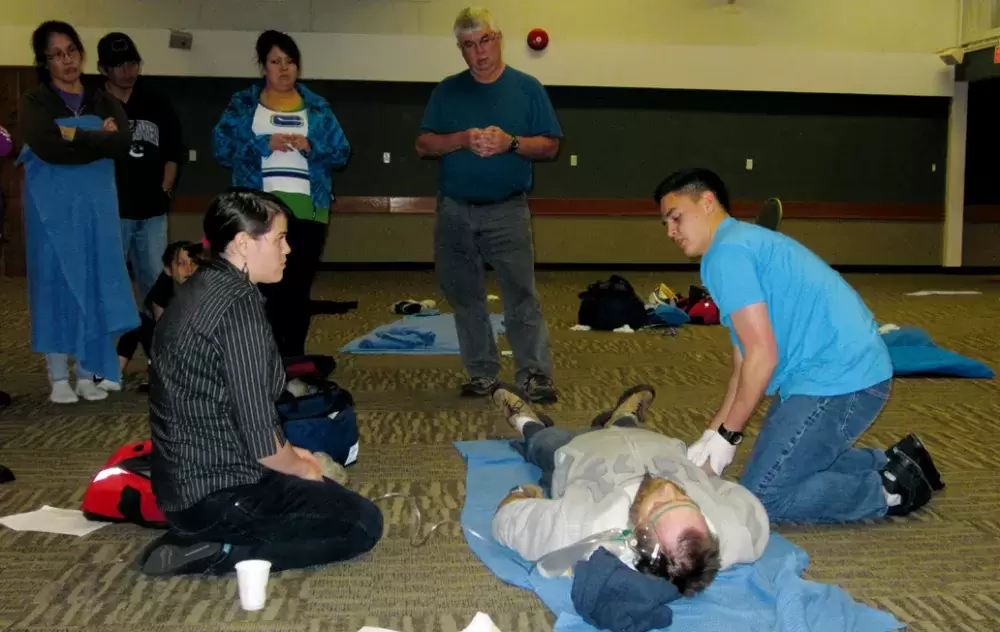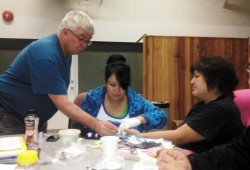“I’m doing this for my people,” said Emergency Medical Responder student Martha Martin of her newest challenge. Martha’s statement reflects the feelings of the other 12 members of her Emergency Medical Responder (EMR) course, the grueling first level of para-medicine.
Since Feb. 16, the students have given up their weekends to spend hours in class learning and practicing practical skills, and many more hours at home studying theory.
Successful graduates of the EMR course will be certified to apply for positions as attendants with rural BC Ambulance Stations and industry. Most students, however, live in areas where it takes the ambulance 20 minutes or more to respond and plan to use their new skills in the service of the people in their home communities.
Martha, a Tla-o-qui-aht member, who currently serves Ahousaht as a first responder, said they are often with a patient for an hour or two before they reach BC Ambulance Services on the First Street dock in Tofino.
“I want to know I’ve done everything I can for my patients and the only way I can do that is to learn as much as I can. This is a first step,” Martha said.
Students will be required to demonstrate practical skills and an understanding of the physiology and anatomy needed to recognize medical and traumatic emergencies commonly faced by rural paramedics. Students will face their first “celebration of learning” with in-class final exams on March 28. Then at the end of April students will undertake licensing exams from the Provincial Emergency Medical Assistants Licensing Board.
The EMR course has only been possible because people from many different organizations worked together for the common goal of making all Nuu-chah-nulth communities safer.
Tommyjoe Frank, lead Ahousaht first responder, worked tirelessly with Mainstream Canada and the Ahousaht Administration to secure funding for his team to travel to attend the course.
Paul Dodds, general manager of Tin Wis, recognized the great need in Nuu-chah-nulth communities for emergency response skills and worked with his staff to provide training space and support for all in the course.
The Clayoquot Biosphere Trust heard requests from Tla-o-qui-aht and Ahousaht first responders and Toquaht Nation and applied to the Nuu-chah-nulth Employment and Training Program (NETP) for the bulk of the tuition fees for the course.
NETP heard the request for training and supported it.
Tla-o-qui-aht provided assistance for tuition for two students and Toquaht supported their students with travel and funding for continued studies. Tla-o-qui-aht, Toquaht, Mainstream and Creative Salmon all provided intervention for unforeseen expenses that arose from the course.
Paul Stone, course instructor and president of Heartsafe First Aid Training from Victoria, interrupted his family vacation in the Caribbean to put the course together on short notice after a previous instructor cancelled due to a family crisis.
Tla-o-qui-aht Chief Councillor Moses Martin, Tla-o-qui-aht Administration, Toquaht Government, Tofino BCAS Unit Chief Bill Craven and the District of Tofino all provided political will to enhance our pre-hospital patient care by supporting the training request from those on the front lines.
“I’m able to do this for my people because so many others worked for our people making this training a priority. This is a first step and I look forward to watching our ability to care for ourselves grow,” concluded Martin.








